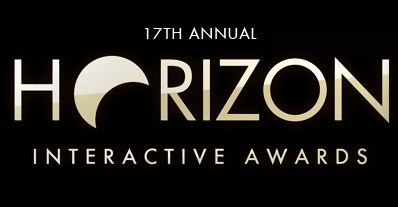
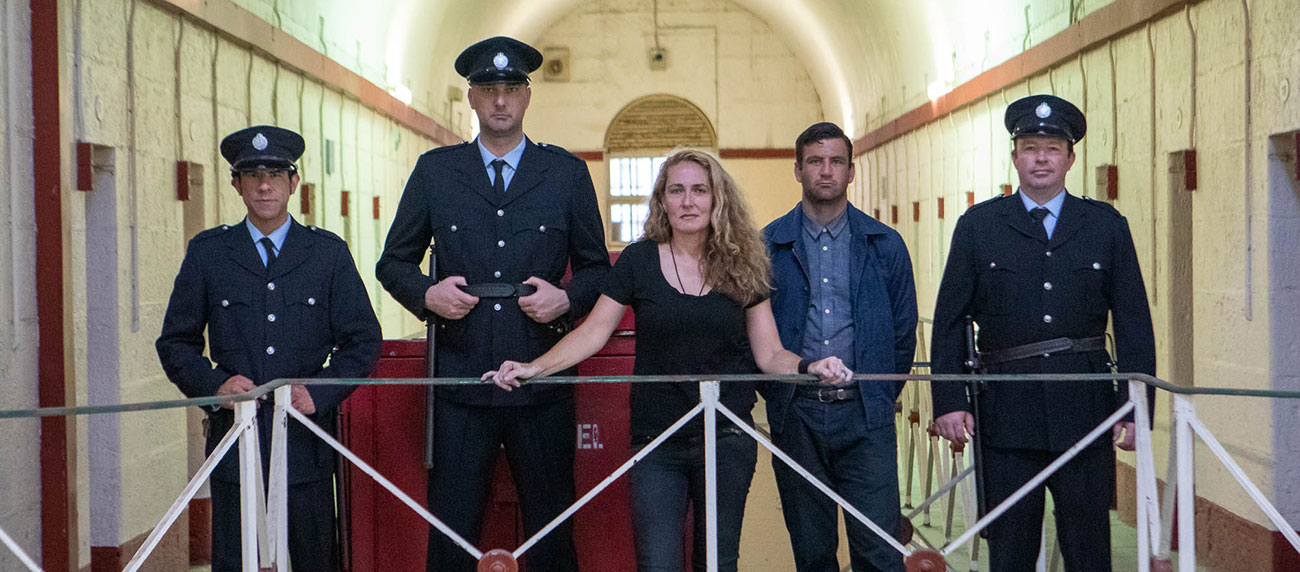 This year’s Best of Show winner was won by Atalanti Films from Melbourne, Australia with the Interactive Experience entry “A Miscarriage of Justice”. The “A Miscarriage of Justice” is an XR documentary using immersive technologies such as VR, AR, Ai, and 3d interactive scanning and projected installations in an immersive experience at the Pentridge Prison Precinct/Museum. The film centers around the execution of Ronal Joseph Ryan, the last man hanged in Australia in 1967. The experience is designed to preserve history and well as create awareness around capital punishment.
This year’s Best of Show winner was won by Atalanti Films from Melbourne, Australia with the Interactive Experience entry “A Miscarriage of Justice”. The “A Miscarriage of Justice” is an XR documentary using immersive technologies such as VR, AR, Ai, and 3d interactive scanning and projected installations in an immersive experience at the Pentridge Prison Precinct/Museum. The film centers around the execution of Ronal Joseph Ryan, the last man hanged in Australia in 1967. The experience is designed to preserve history and well as create awareness around capital punishment.
With us today to talk more about the entry, we have Atalanti Dionysus, of Atalanti Films, to discuss the outstanding work and the Best of Show Award.
HIA: Atalanti, first off, let me congratulate you on the “Best of Show” award for this amazing project. It is outstanding! Atalanti, please talk a little about what receiving the Best of Show award means to you and your agency, especially during this uncertain time of dealing with the effects of the worldwide pandemic.
Atalanti: I am extremely honoured to receive this award. This award acknowledges my approach to storytelling in this innovative field at a culturally/historically significant site, an area I am very passionate about. The benefit of receiving an award as prestigious as ‘Best of Show’ at the Horizon Awards expands the creative efforts of Atalanti Films by exposing it to different parts of the world, and that is very exciting for me. It opens up opportunities for future work with diverse organisations and institutions who may be desiring an approach that creates differences within their establishments and helps them expand their audience base, particularly throughout this very challenging time that we are all faced with during the pandemic.
This award also empowers me as a female working in a field that is dominated predominantly by males. I hope it inspires other females to consider working in the immersive tech industry.
HIA: Atalanti, talk about the various components that encompass the “A Miscarriage of Justice” entry. Specifically, it utilized many different technologies to create an immersive experience. Speak to those technologies and how you put it altogether.
Atalanti: This project aims to highlight a historical moment in the 1960s, transporting the viewer to bear witness to one of the most political executions in Australia, Ronald Joseph Ryan's hanging. Ronald Ryan's execution became significant in many ways and contributed to abolishing capital punishment in Australia. Many believed he was falsely accused, causing landmark protest and vigils by the new era of political activists coming through in the 1960s-70s in Australia.
I wrote this experience re-imagining it through immersive technologies. I wanted to offer the spectator another viewpoint to consider as capital punishment is still quite controversial worldwide. This project places the spectator in the story world at the actual location no longer as a passive viewer but rather a character in the experience where the story is happening to them, around them, and they become part of that reality. I want the film to provoke emotion within the spectator, which may induce a greater awareness, leaving them feeling somewhat different from before entering the experience. By viewing the content in VR/AR, you have a greater opportunity to empathise with the story topic. I could never have achieved this with 2D traditional technology.
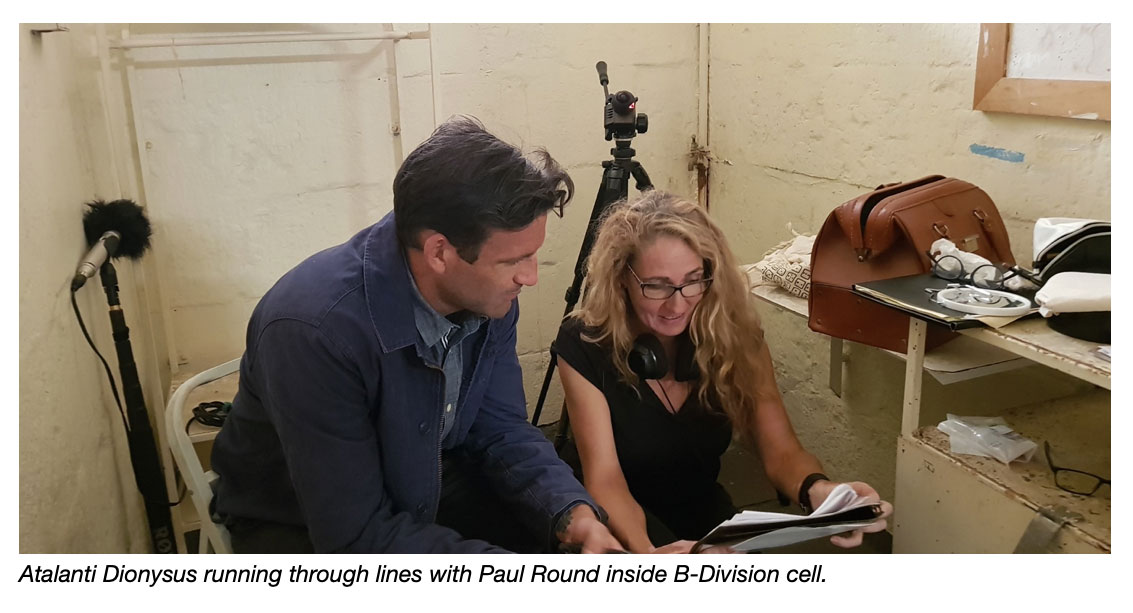
Heritage-listed Pentridge Prison in Coburg stopped operating as a prison in 1997. It was the perfect location for me to bring this project to life as it is where the executions took place almost 50 years ago. Having access to this location gave this docudrama an authenticity that I would never have been able to recreate.
'A Miscarriage of Justice VR' is an 18-minute experience filmed on location at the prison site, classified as Australia's highest security prison and where 11 executions took place from 1932 to 1967. Ronald Ryan and Jean Lee were the last man and woman executed at the site, 16 years apart. The docudrama tells the story of both executions through the 'point of view' of Jean Lee. When the spectator enters the virtual reality experience, they arrive at Jean Lee's apparition, with her voice playing in their heads. Jean Lee was executed in 1951 and Ronald Ryan in 1967; both were executed at the same prison by the same hangman. Jean Lee leads Ryan through his final moments, and he is the only one who can see her. Of course, this aspect is an abstract thought speculative, if you will. Still, it allows the spectator who embodies Lee to have a reason to be with Ryan in every scene. It was also a way for me to highlight that women were also executed during capital punishment in Australia. Minutes before the hanging, the spectator's role switches to that of Ronald Ryan, played by actor Paul Round. They are brought face to face with the unimaginable. It is also the first time the spectator sees Jean Lee, played by actress Max Sharam, whom they have embodied until this point in the film.
The VR film expands itself by being exhibited alongside 2D digital videos of prison warders watching the spectator as they enter the cinema, projected on the cinema walls. These images create an illusion that the spectator has entered the prison before they put on the VR headset, becoming immersed in the experience the very moment they step into the VR cinema space.
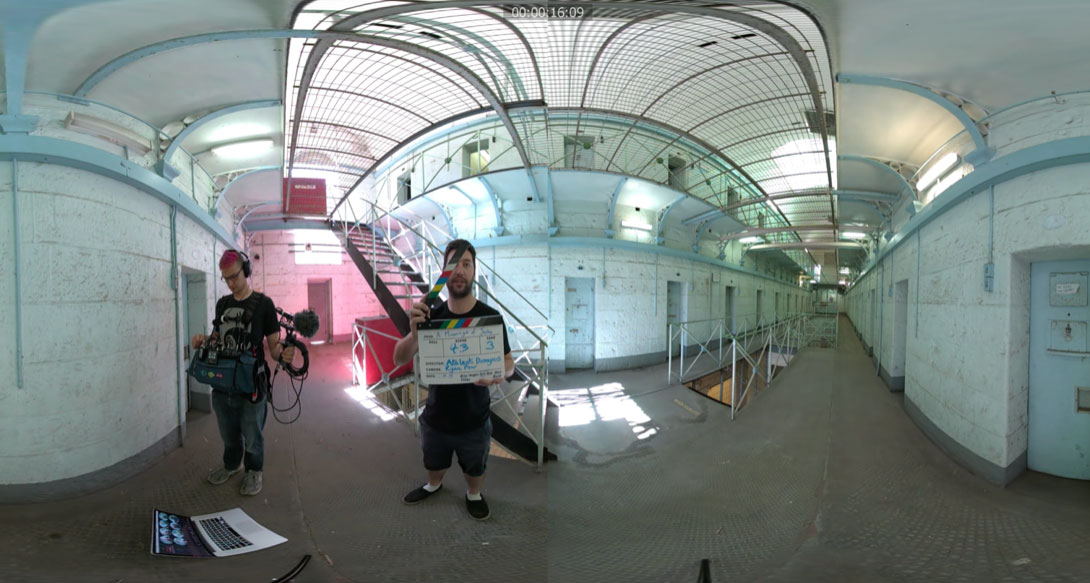
I spent six months inside the prison, developing and planning the film. Many of the cells and corridors had been graffitied and vandalised. I needed to locate areas with enough natural light as I could not use lights and stands when filming in 360 as everything is in the shot. Aesthetically I needed to find an area that looked of the time I was trying to bring to life – 1967. I wrote the script inside the prison, imagining the story as I walked through it. When the actors were brought on set, they said they felt a sense of embodiment as they performed at the exact location where the events took place years ago. When filming began, they were the only ones on set, no crew staring at them. They had not experienced filming like this before; it added to their sense of emotional isolation and immediately connected them to their characters.
'A Miscarriage of Justice AR' uses augmented reality at the prison site and features five varying experiences. Two of the experiences use live-action volumetric video and artificial intelligence technologies, which permit the spectator to interact directly with Ronald Ryan by stepping into his cell and conversing with him. The other AR experience implicates the spectator in his escape. This use of the technology is emerging, and 'A Miscarriage of Justice' is one of very few worldwide to be using it in this way within a documentary story at a site-specific location.
The additional AR experiences are 5 x 4-minute vignettes that use 2D archival images, voice-over, a soundscape that provide the backstories of each of the characters portrayed in the VR docudrama tying all the story elements together. This part of the documentary takes on a type of gameplay that requires the spectator to scale the prison bluestone wall using their mobile devices to find the characters in the story world at the site. It offers visitors to the precinct another way of exploring it and its history.
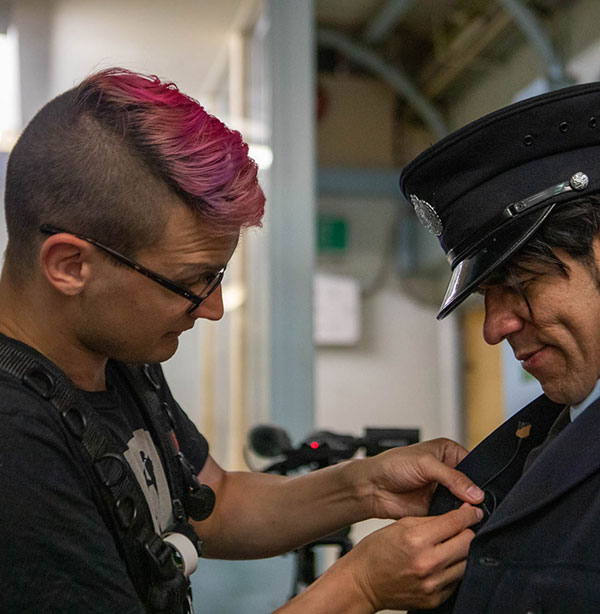 'A Miscarriage of Justice 3D' is a self-guided tour that uses photogrammetry technology and can be viewed via the website in an interactive 360 mode or via a VR headset and offers the spectator complete access B-Division. You choose where and which part of the prison you wish to explore. This aspect of the project has preserved this division for many to enjoy for years to come. B-Division has been renovated and turned into a 5-star hotel. Filming this experience was more about preserving history. That was important to me as I knew that this part of the prison was being renovated and would never look the same. B-Division was re-known for housing some of Australia's most notoriously criminals and, as a consequence, holds a lot of historical significance. Capturing it as a 3D scan has opened up future opportunities for unique narratives embedded in the experience as technology advances. Yes, it needs to catch up to my train of thought.
'A Miscarriage of Justice 3D' is a self-guided tour that uses photogrammetry technology and can be viewed via the website in an interactive 360 mode or via a VR headset and offers the spectator complete access B-Division. You choose where and which part of the prison you wish to explore. This aspect of the project has preserved this division for many to enjoy for years to come. B-Division has been renovated and turned into a 5-star hotel. Filming this experience was more about preserving history. That was important to me as I knew that this part of the prison was being renovated and would never look the same. B-Division was re-known for housing some of Australia's most notoriously criminals and, as a consequence, holds a lot of historical significance. Capturing it as a 3D scan has opened up future opportunities for unique narratives embedded in the experience as technology advances. Yes, it needs to catch up to my train of thought.
HIA: What were the biggest challenges you faced with the project?
Atalanti: Some of the biggest challenges were understanding how the technology works and then working with its differences and limitations. When writing the VR story, I needed to consider ways to focus the spectator's attention to where I wanted them to look. The director no longer has control of the frame or the spectators viewing position; the spectator does. Most cinematic VR scenes are captured in one shot as cut-ting within a scene can be somewhat jarring for the spectator and may cause nausea. Using different shots within a scene needs to be considered objectively and with good reason. I wanted to experiment with this notion, so I did in two of the scenes, particularly the one where Ryan is saying goodbye to his mother for the last time. I cut between Ryan's wide shot with the prison warders by his side and a close-up shot of Ryan's mum standing behind prison bars, using a montage type editing sequence. The approach we took to create close-ups and wide shots was to place the camera closer or further from the characters. 360 cameras do not come with zoom lenses, so we had to improvise. Constructing camera movements to draw emotions is quite a challenge in this space.
Producing the AR content was challenging when it came to the technology regarding app development and mapping out the location's experience. I felt the technology was a little slow catching up to my imaginings and how I wanted the spectator to engage with the protagonist. And so, I had to adapt and pull back some of my ideas to make it work with what is currently available, and I must admit, I am pleased with the results. This doesn't mean I won't pursue my ideas when the tech becomes available. The frustration here is in the waiting game.
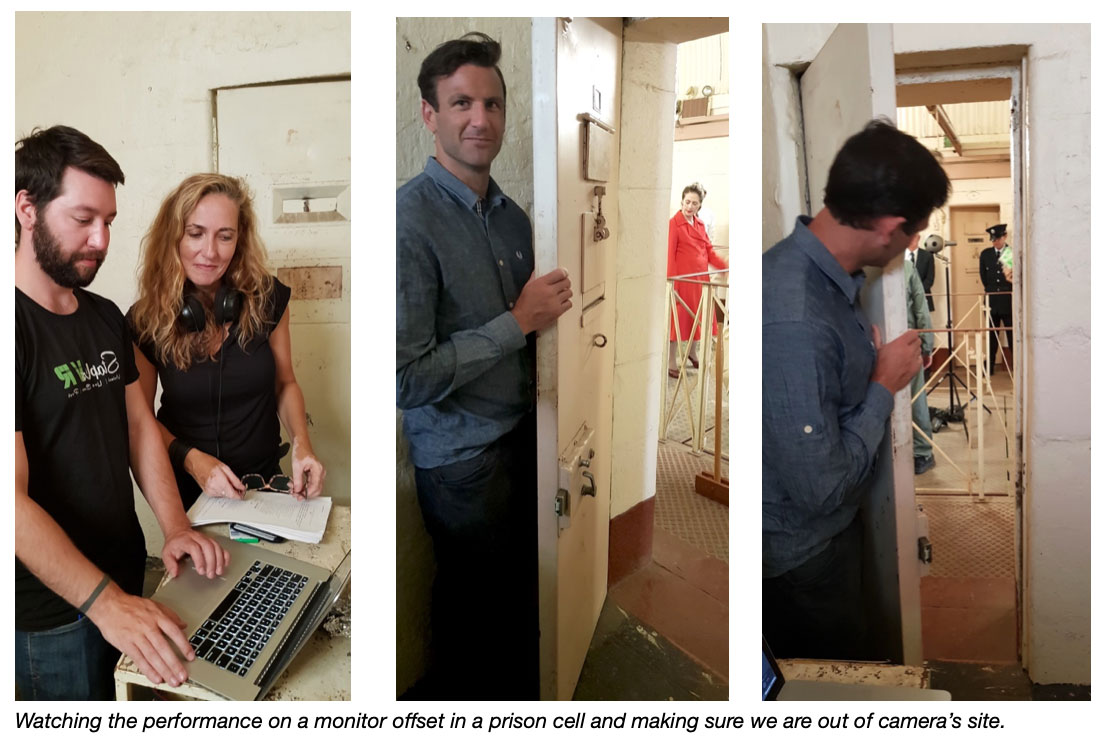
HIA: Talk about the results from the project and how it was received.
Atalanti: The project has had a worldwide distribution and received multiple awards, most recently winning the Jury Prize for Journalistic Achievement in VR at the Social Impact Media Awards 2021. It also received the Award of Recognition for Best Concept and Recognition of Women Filmmakers at the Impact Docs Award USA.
It received an Honorable Mention Award for Virtual Reality at the Los Angeles Film Awards and an Official Selection for Best VR Documentary at the 360 Film Festival in France. It was selected as a Finalist for VR Film of the Year and a Diversity Award at the Real World XR Awards in Australia.
The VR project has been offered a co-distribution via SIMA Studios who have a presence in over 30 countries, and work with local community activists, cultural organizations, and educational forums to increase social issues' visibility and impact. They also run educational programs reaching over 70,000 students worldwide. We are very excited to join their program.
The documentary has had a social impact and created empathy, challenging people's ideas on capital punishment's appropriateness. The feedback so far has been inspiring. We are told that using this medium for this story has been very impactful, which I was hoping for. I am exploring ideas on how this could be presented in educational settings at the location. There have been numerous inquiries from many educational institutions that wish to explore and engage with the historical ambitions of the content.
 HIA: Tell us more about the people involved in producing the project.
HIA: Tell us more about the people involved in producing the project.
Atalanti: Our team of collaborators for this project draw from skillsets from multiple disciplines. Accessing the performing arts of theatre for the main actors, Paul Round, Max Sharam, Wayne Pearn, Sandy Green and Bridgette Burton, was wonderful for the project, as was award-winning music composer Stefan Cassomenos, who arranged, wrote and composed the 18-minute score and comes from a background in composing and performing with Symphony Orchestras from around the globe. We utilized cutting edge camera equipment, and camera operator Ryan Pow, who worked very closely with me on set and in the edit and as a professional VR postproduction supervisor, offered a wealth of knowledge. Kyle Evans, the sound recordist, had worked on Australia’s first escape room experience. He knew exactly how to hide the mics and lapels; he is an exceptional operator. Tuck Siva was the app and game developer, and together we built the AR component of the project, which had many ‘firsts’ attached to it. I wrote, directed and produced the project; coming from a background of working across a range of cross-media platforms, this project marks my debut into VR and AR storytelling.
HIA: What is next for how this project will continue to evolve?
Atalanti: This work embodies a current moment in history where we progressively live our realities through a digital interface, whereby screen content creators can present novel approaches where the spectator and the protagonist meet through a digital platform. By expanding narration across multiple platforms, we potentially modify how we learn and connect to a place and story. Hopefully, this gives it new meaning. There are many diverse components to this project that feed off the one storyline. The next iteration of the project will offer visitors an opportunity to learn more about the prison history by scaling the prison wall with their mobile devices, where each bluestone will reveal stories of other prisoners who resided ther. Priest, teachers, and even musicians who performed here, for example, Roy Orbison performed a concert for the prisoners in 1975. Many untold stories are waiting to be told.
The 3D virtual tour of B-Division will introduce AI audio coupled with live-action performances where the visitor can ask prisoners questions, have conversations, and connect with other visitors online. The crime genre is prevalent because it is intriguing, and we are fascinated by human behaviour, and so we want to know what drives people to crime. We want to fight for the injustice of those who are innocent, and so part of the next aspects of the experience will bring some of these stories to the surface.
HIA: What trends are you seeing in the digital space right now?
Atalanti: This documentary experience transcends the screen and expands into the physical world using AR+Ai, VR and 3D technologies as a means of creating greater connection and awareness, challenging us to see things in a new way. I see the AR medium's gamification come into its own with opportunities for real stories to be told at site-specific locations, museums, galleries, crime scenes, etc. Coupled with artificial intelligence (AI), the potential is immense. I have only scraped the surface of what is to come in the area of live-action AR and Ai storytelling. Digital experiences encourage people to explore spaces and places and connect and travel to local communities to explore and investigate things together. Site responsive games such as Pokémon Go, for example, created a social vibe. People were out and exploring spaces together. I think more of these experiences will come to fruition as storytellers start writing for site-specific locations where the spectator is the protagonist, no longer passive but involved in the story changing the experience's outcome. The user is becoming the creator. This is something we see more and more as we have access to technology via our mobile devices. This is where the opportunities lie for content creators. The content is accessible all the time, anytime.
As we are in unusual times, theatres, museums, and galleries have had to re-adjust, transforming their stories and exhibitions in novel ways. Some of the trends we are seeing are live streaming of events online, whether it be theatre shows, gallery openings or museum installations, and the beauty is anyone can join in from anywhere around the world. Clever tech is offering solutions, and I think audiences are enjoying them.
HIA: Obviously we are in uncharted territory with the current events of the global pandemic. Can you talk about how your company is adapting to the changing market and what it means to digital media in general?
Atalanti: I think the pandemic has changed the way we do business; we have to learn to adapt to change really quickly and evolve just like tech does. We need to diversify and use the technology to our advantage because stories are now being told across multiple platforms, no longer limited to the rectangular 2D screen.
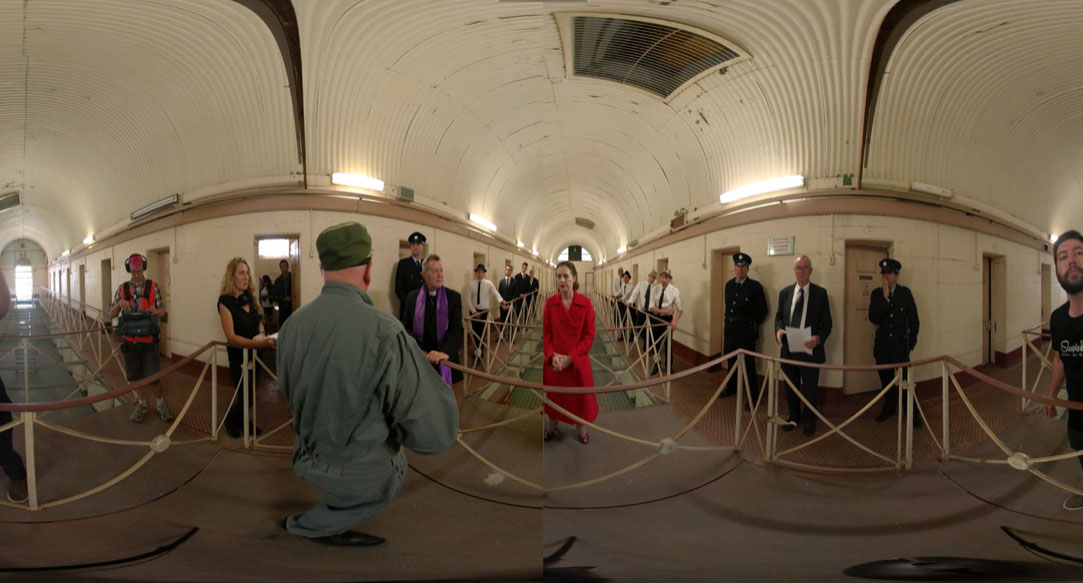
It became obvious to me that culturally sensitive sites could benefit from experiences using these technologies as they do not leave a footprint. You don’t need to touch any of the walls, mount frames or screens, or even step inside; you need your mobile device to explore the site via a story. Accessing open spaces during a time when travel and even human interaction sometimes requires to be at a distance is where producing this type of work can access a wider audience who cannot afford to fly to destinations or are prohibited from doing so, or physically are unable to access a historical site. This technology gives people the feeling that they are there. They embody the experience as its extremely immersive. I think digital media offers equitable access, and this is what makes this medium important.
HIA: Do you have anything else you would like to add to the interview?
Atalanti: I have enjoyed examining and designing stories in the interactive digital space. I appreciate the innovation that technology offers storytelling. We are currently at a new inception of a ‘cinematic’ medium. My future ambitions are to work with museums, galleries and cultural/historically significant sites creating immersive interactive digital experiences for audiences to learn, play and interact together.
We are only limited by our imagination and, of course, technology. Technology em-powers how we express stories and as it continually evolves, so should the way we tell stories.
HIA: Atalanti, thank you again for taking the time to talk more about this award and for sharing the great work with our competition. We hope that you stay safe and are able to ride out the pandemic and return to some sense of normal soon. We sincerely wish you the best in the future and look forward to having you back in future competitions.